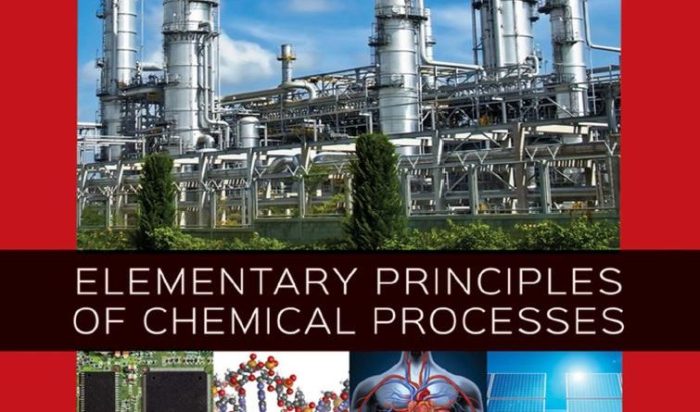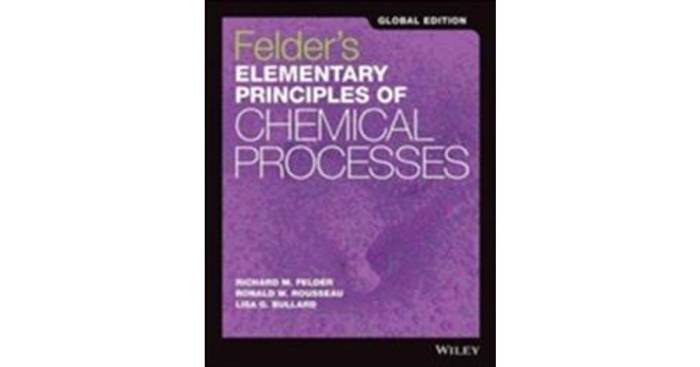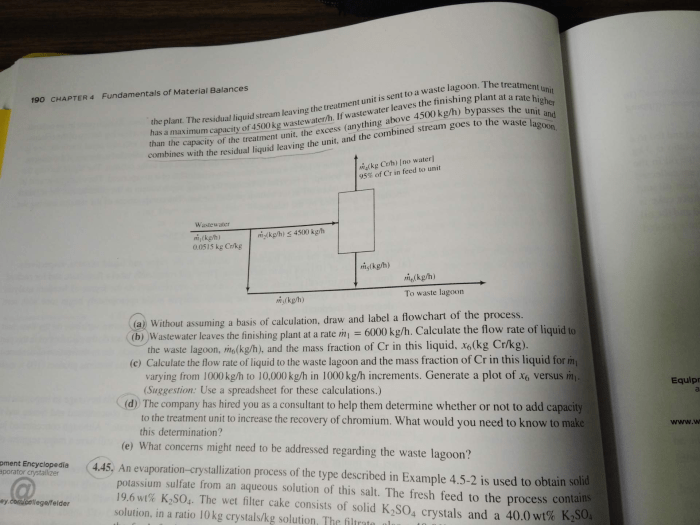Elementary principles of chemical processes 4th edition solutions – Dive into the fascinating realm of chemical engineering with “Elementary Principles of Chemical Processes, 4th Edition,” a comprehensive guide that unlocks the secrets of chemical processes. This extensively revised and updated textbook provides a thorough understanding of the fundamental principles that govern the behavior of chemical systems, empowering students and practitioners alike to design, optimize, and control chemical processes with confidence.
From the intricacies of thermodynamics to the dynamics of fluid mechanics, heat transfer, and mass transfer, this book delves into the core concepts that shape the chemical process industry. With its lucid explanations, engaging examples, and practical applications, “Elementary Principles of Chemical Processes, 4th Edition” equips readers with the knowledge and skills essential for success in this dynamic field.
1. Introduction
The “Elementary Principles of Chemical Processes, 4th Edition” textbook provides a comprehensive introduction to the fundamental principles and applications of chemical engineering. The book covers a wide range of topics, including thermodynamics, fluid mechanics, heat transfer, mass transfer, chemical reaction engineering, process control, and process design.
The key concepts covered in the book include:
- The first, second, and third laws of thermodynamics
- The principles of fluid mechanics, including fluid properties, pressure, and flow
- The three modes of heat transfer: conduction, convection, and radiation
- The basic principles of mass transfer, including diffusion, convection, and absorption
- The basic principles of chemical reaction engineering, including reaction kinetics and reactor design
- The basic principles of process control, including feedback control and feedforward control
- The basic principles of process design, including process synthesis, equipment selection, and process optimization
2. Thermodynamic Principles

Thermodynamics is the study of energy and its transformations. The first law of thermodynamics states that energy cannot be created or destroyed, only transferred or transformed. The second law of thermodynamics states that the entropy of an isolated system always increases over time.
The third law of thermodynamics states that the entropy of a perfect crystal at absolute zero is zero.
Thermodynamics has many applications to chemical processes. For example, it can be used to calculate the energy requirements of a chemical reaction, to design heat exchangers, and to optimize the efficiency of chemical processes.
Examples of how thermodynamics can be used to solve engineering problems:
- Calculating the energy requirements of a chemical reaction
- Designing heat exchangers
- Optimizing the efficiency of chemical processes
3. Fluid Mechanics
Fluid mechanics is the study of the behavior of fluids. Fluids are substances that flow, such as liquids and gases. The basic principles of fluid mechanics include fluid properties, pressure, and flow.
Fluid properties are the physical characteristics of fluids, such as density, viscosity, and surface tension. Pressure is the force exerted by a fluid per unit area. Flow is the movement of a fluid.
Fluid mechanics has many applications to chemical processes. For example, it can be used to design pumps, pipelines, and reactors.
Types of fluid flow:
- Laminar flow
- Turbulent flow
Applications of fluid mechanics:, Elementary principles of chemical processes 4th edition solutions
- Designing pumps
- Designing pipelines
- Designing reactors
4. Heat Transfer
Heat transfer is the movement of thermal energy from one object to another. The three modes of heat transfer are conduction, convection, and radiation.
Conduction is the transfer of thermal energy through direct contact between two objects. Convection is the transfer of thermal energy by the movement of a fluid. Radiation is the transfer of thermal energy through electromagnetic waves.
Heat transfer has many applications to chemical processes. For example, it can be used to design heat exchangers, boilers, and furnaces.
Factors that affect heat transfer rates:
- Temperature difference between the two objects
- Surface area of the objects
- Thermal conductivity of the objects
Examples of how heat transfer can be used to design and operate chemical processes:
- Designing heat exchangers
- Designing boilers
- Designing furnaces
5. Mass Transfer: Elementary Principles Of Chemical Processes 4th Edition Solutions
Mass transfer is the movement of mass from one location to another. The basic principles of mass transfer include diffusion, convection, and absorption.
Diffusion is the movement of mass due to a concentration gradient. Convection is the movement of mass due to the movement of a fluid. Absorption is the movement of mass from a gas into a liquid or solid.
Mass transfer has many applications to chemical processes. For example, it can be used to design distillation columns, absorbers, and scrubbers.
Factors that affect mass transfer rates:
- Concentration gradient
- Surface area
- Diffusion coefficient
Examples of how mass transfer can be used to design and operate chemical processes:
- Designing distillation columns
- Designing absorbers
- Designing scrubbers
6. Chemical Reaction Engineering

Chemical reaction engineering is the study of the kinetics and design of chemical reactors. Kinetics is the study of the rates of chemical reactions. Reactor design is the study of the design of chemical reactors.
Chemical reaction engineering has many applications to chemical processes. For example, it can be used to design reactors for the production of chemicals, fuels, and pharmaceuticals.
Types of chemical reactors:
- Batch reactors
- Continuous reactors
- Plug flow reactors
- Mixed flow reactors
Applications of chemical reaction engineering:
- Designing reactors for the production of chemicals
- Designing reactors for the production of fuels
- Designing reactors for the production of pharmaceuticals
7. Process Control
Process control is the use of feedback and feedforward control loops to maintain the desired operating conditions of a chemical process. Feedback control loops measure the output of a process and use this information to adjust the input of the process.
Feedforward control loops use information about the disturbances to a process to adjust the input of the process.
Process control has many applications to chemical processes. For example, it can be used to control the temperature, pressure, and flow of a chemical process.
Types of process controllers:
- Proportional controllers
- Integral controllers
- Derivative controllers
- PID controllers
Applications of process control:
- Controlling the temperature of a chemical process
- Controlling the pressure of a chemical process
- Controlling the flow of a chemical process
8. Process Design
Process design is the process of designing a chemical process. The steps involved in process design include process synthesis, equipment selection, and process optimization.
Process synthesis is the process of selecting the best process flowsheet for a given chemical process. Equipment selection is the process of selecting the best equipment for each unit operation in a chemical process. Process optimization is the process of optimizing the operating conditions of a chemical process.
Process design has many applications to chemical processes. For example, it can be used to design processes for the production of chemicals, fuels, and pharmaceuticals.
Steps involved in process design:
- Process synthesis
- Equipment selection
- Process optimization
Applications of process design:
- Designing processes for the production of chemicals
- Designing processes for the production of fuels
- Designing processes for the production of pharmaceuticals
9. Case Studies

Case studies are real-world examples of how the principles of chemical engineering have been applied to solve problems. Case studies can be used to illustrate the application of the principles of chemical engineering to a variety of problems, and to show how these principles can be used to improve the performance of chemical processes.
Examples of case studies:
- The design of a new process for the production of a chemical
- The optimization of an existing process for the production of a fuel
- The development of a new control system for a chemical process
Question & Answer Hub
What are the key features of “Elementary Principles of Chemical Processes, 4th Edition”?
This book offers a comprehensive and up-to-date treatment of the fundamental principles of chemical processes, with a focus on practical applications and real-world examples.
Who is the intended audience for this book?
This book is suitable for undergraduate and graduate students in chemical engineering, as well as practicing engineers seeking to enhance their understanding of chemical processes.
How does this book differ from previous editions?
The 4th edition has been extensively revised and updated to reflect the latest advancements in the field, including new content on process intensification, sustainability, and data-driven modeling.